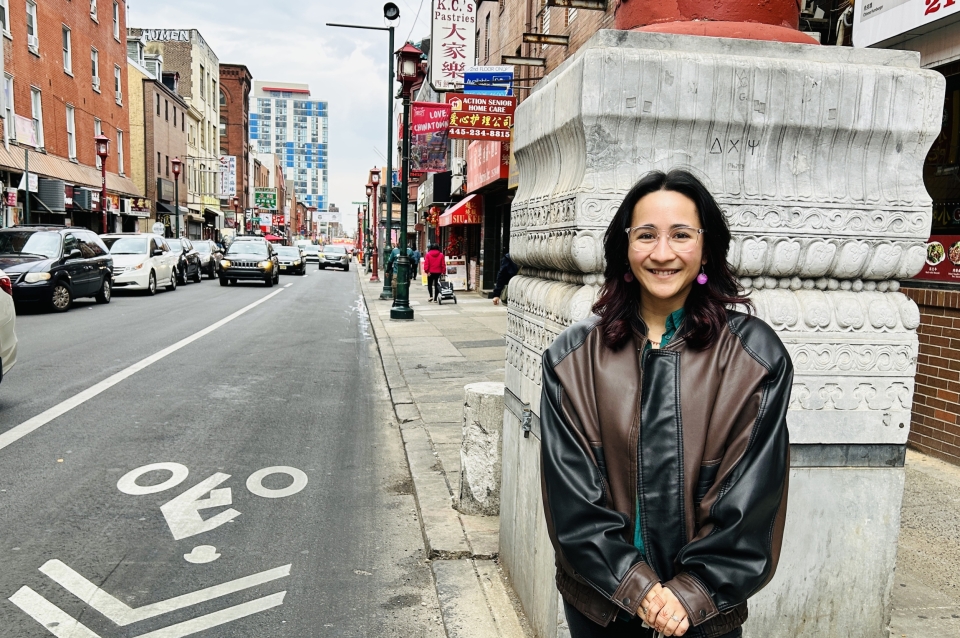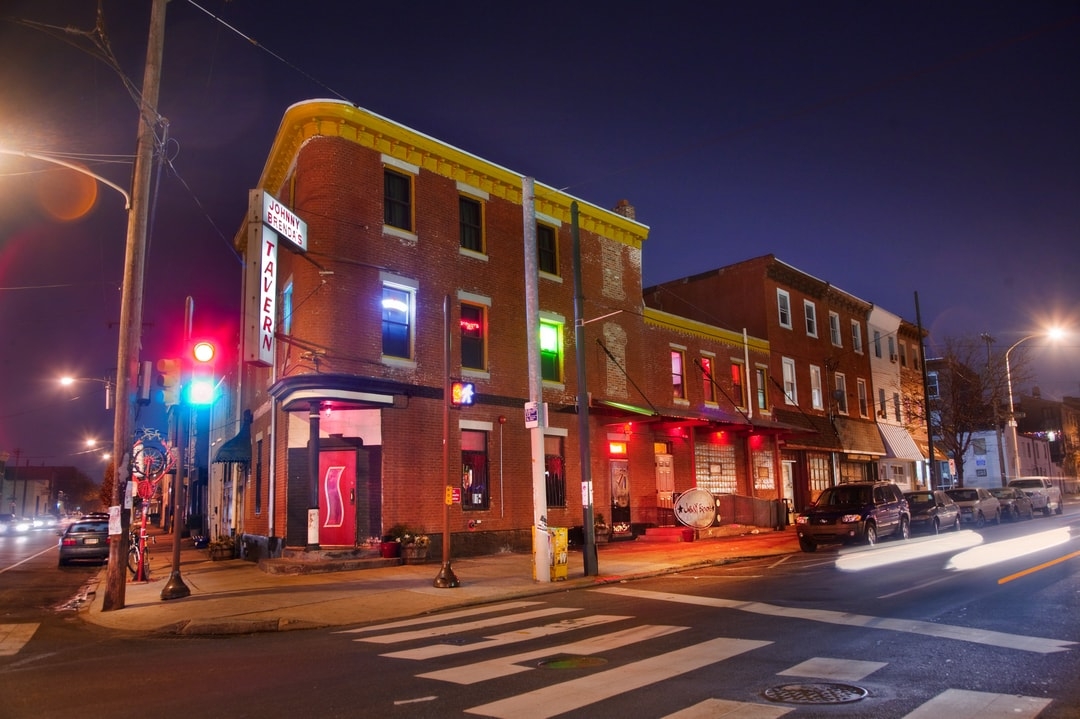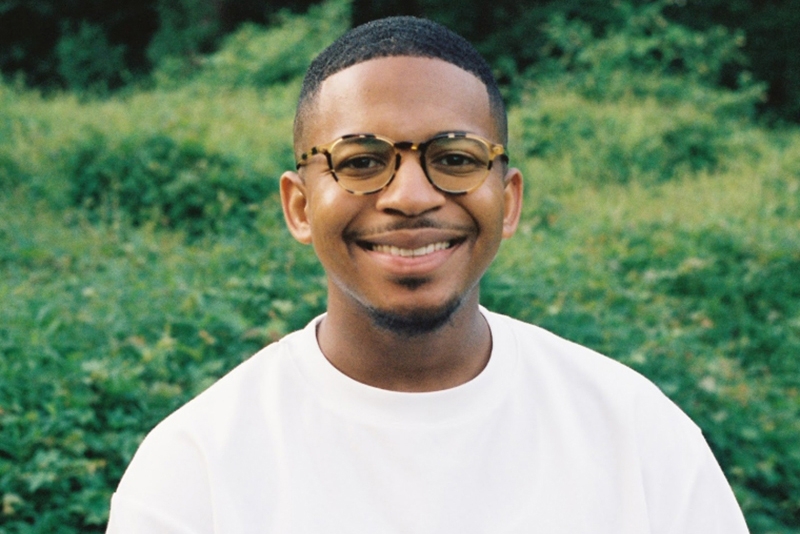Listening to the City
In a Spring 2025 City & Regional Planning course, students are exploring the connections between urban sounds and neighborhood identity.
Stuart Weitzman School of Design
102 Meyerson Hall
210 South 34th Street
Philadelphia, PA 19104
In a Spring 2025 City & Regional Planning course, students are exploring the connections between urban sounds and neighborhood identity.

“I’ve always been fascinated by how different cities sound," says Aki Di Sandro, a student in the Master of Urban Spatial Analytics program.
Michael Grant
mrgrant@design.upenn.edu
215.898.2539
Trash trucks, car stereos, train whistles, construction noise: Sounds are often thought of as incidental to urban life. But how do they shape the identity of a place?
That’s what Stanley Collins, a Provost’s postdoctoral fellow in City and Regional Planning at the Weitzman School, is asking his students to consider this semester. His course, an urban studies and City and Regional Planning elective that attracted a mix of undergraduate and graduate students, is called Listening to the City: Soundscapes, Music, and Place. An extension of Collins’s research on music venues and neighborhood identity and change, the course encourages students to think qualitatively about how urban sounds reflect complex cultural and racial dynamics. For Collins, music and sound are a window into urban life that even sophisticated geographic analytics methods don’t provide.
“We can draw statistical models that measure neighborhood changes, but what often is missed in that type of analysis is the lived experiences of race,” Collins says. “My goal is to help students develop a critical eye to the qualitative and the lived experience.”
Collins became interested in the topic of urban sound after attending a concert at the Fillmore, a concert venue in Fishtown, a formerly industrial neighborhood in Philadelphia. While enjoying the show, he happened to be gazing around the venue when he realized that it used to be a factory. He began researching the neighborhood’s history, eventually learning about how Fishtown had been a mostly white, working-class neighborhood for much of the 20th century, how it had been hit hard by deindustrialization, and how, as a result, the neighborhood developed reputations as a violent, insular, and “racist” place. Simultaneously, he also learned how the establishment of Johnny Brenda’s, another neighborhood bar and music venue, marked a turn in the neighborhood’s reputation from a place that was thought of as violent and insular to one that was hip and cool.

Johnny Brenda's, a popular bar and music venue in Philadelphia's Fishtown neighborhood (Photo G. Widman for VISIT PHILADELPHIA®)
“[Johnny Brenda’s] is the place that a lot of people talk about as being the inflection point in the neighborhood’s history,” Collins says.
The course is built around readings on pop music history, gentrification, and racial capitalism. Students discuss case studies of conflict around music and noise in changing cities. They include resistance to noise complaints in Oaklandand the #Don’tMuteDC movement in Washington, DC, a response to efforts by new residents of a gentrifying neighborhood to crack down on sidewalk music at a local electronics store. Students say the course has encouraged them to listen to the city more closely and critically.
“What counts as noise?” says Lucy Chamberlain, a DC native and second-year at Penn with a double major in East Asian Languages and Urban Studies. “What counts as a good sound and what scouts as a bad sound? Why do we think this way? What forms our perceptions? Sound is very racialized and class-based.”
As part of the course, students are keeping sound journals, visiting various parts of the city and recording their observations of what they sound like. One early prompt was to reflect on how background music—or muzak—is used in different urban spaces. Students spent time in different dining and retail establishments and wrote down the types of music they were hearing. Chamberlain, for example, found a Motown soundtrack in the lobby of the Inn at Penn, a place she’d never been before, and categorized it as familiar and inviting music for older generations who were likelier to be there.
Aki Di Sandro, a student in the Master of Urban Spatial Analytics program, found Vietnamese rap at a banh mi and bubble tea shop in South Philly, a soundtrack apparently chosen by the young people working the shift. For her final project—a research assignment on the question of what sounds say about a specific place—Di Sandro says she’s hoping to explore the sonic divisions between Chinatown and Chinatown North, the part of the neighborhood that was separated by the building of Interstate 676. A sound map of the area, filled out with resident interviews and geospatial information, could illuminate the history and culture of the neighborhood as it anticipates the Chinatown Stitch, a major federally funded infrastructure project building new public space over the highway, Di Sandro says.

“My goal is to help students develop a critical eye to the qualitative and the lived experience,” says Collins.
“I’ve always been fascinated by how different cities sound. I think it says a lot about the identity of a city and who’s in it and who’s allowed to make noise,” Di Sandro says.
Urban spatial analytics in particular and city planning in general tend to be heavily quantitative disciplines, Collins says. They’re also preoccupied with the visual presence of buildings, public amenities, and infrastructure. Collins hopes his course will help students approach questions of urban change more qualitatively, and with an ear for nuance.
“In terms of our sensory understanding of place, sight is at the top,” Collins says. “How do we elevate sound?”